"Fine-Arts" prints on paper
It is a process of printing on art paper using very high-quality pigment inks and printed in very high definition. Its level of conservation is exceptional (more than 100 years), its quality, depth, and richness of nuances exceeds the classic photo print on Argentic paper.

Glossy finish
Apart from its exceptional thickness, the fiber paper is composed of an alpha-cellulose base without acid and it is covered with barium sulphate, and a microporous layer absorption enhancing pigments during printing. A pure white color, non-yellowing to light, this paper is especially designed for resistance and aging. It is used by major museums worldwide as it offers excellent resolution, rendering deep and dense colors.
Art Print "Fine Art" - Glossy finish on a fiber base paper 325 g.

Our high end prints and reproductions
ArtMajeur only uses natural papers with neutral pH, resistant, and of high quality, selected from renowned papermakers!
Constant attention is paid by our master printer, whether in terms of color control or respect for the graphic chain. Our high level of quality requirement is a major asset of ArtMajeur framed art prints.
For Artists! You help artists to live from their work. They receive royalties everytime you buy their prints.
About our fine prints-
Original Artwork
Painting,
Tempera
- Dimensions Height 539.4in, Width 480.3in
- Framing This artwork is not framed
- Categories Classicism Religion
Au centre, le Christ jugeant est représenté avec une musculature puissante, un bras levé, symbolisant sa capacité divine à décider du sort éternel des âmes. À sa droite se trouve la Vierge Marie, regardant vers les élus avec une expression empreinte de compassion. Ils sont entourés d'une foule de saints et de martyrs, identifiables à leurs attributs et parfois aux instruments de leur martyre, qui attendent le jugement.
Le bas de la fresque illustre les morts ressuscitant de leurs tombes, certains élevant leurs mains en signe de joie tandis que d'autres sont entraînés vers la damnation par des démons. À gauche, on peut voir les élus montant au ciel, tandis qu'à droite, les damnés sont précipités en enfer.
La dynamique des corps en mouvement crée une composition tumultueuse et intense. Les couleurs vives, le contraste entre la lumière et l'ombre, et le tourbillon de figures célestes et damnées contribuent à l'impression dramatique de l'œuvre. L'ensemble dépeint à la fois l'espoir du salut et l'horreur de la damnation, un message puissant adressé aux fidèles et aux visiteurs de la chapelle.
Related themes
Michelangelo di Lodovico Buonarroti Simoni, commonly known as Michelangelo, was born on March 6, 1475, in Caprese, Italy, and is widely regarded as one of the greatest artists in the history of Western art. A painter, sculptor, architect, and poet, Michelangelo's work embodied the Renaissance ideals of humanism, showcasing a mastery of both technique and emotion. His legacy is defined by his ability to transform both marble and fresco into works of profound expression and technical virtuosity.
Michelangelo's early education began in Florence, where he trained as a sculptor under the guidance of renowned artists. At the age of 16, he was taken under the patronage of Lorenzo de' Medici, a key figure in the Florentine Renaissance, where he honed his skills and came into contact with other celebrated artists of the time. In 1496, he moved to Rome, where his monumental career began with the creation of Pietà, a marble sculpture that displays a striking level of detail and emotional depth.
Michelangelo's most famous works include the David, a towering marble statue that has come to symbolize human strength and beauty, and his frescoes on the ceiling of the Sistine Chapel in the Vatican, completed between 1508 and 1512. The Sistine Chapel ceiling is a triumph of artistic imagination, featuring scenes from the Book of Genesis, including the iconic Creation of Adam. His use of perspective, anatomical precision, and dramatic compositions redefined the possibilities of painting and cemented his reputation as a master of the medium.
In addition to his achievements in sculpture and painting, Michelangelo was also an accomplished architect. He played a pivotal role in the design of St. Peter's Basilica in Vatican City, where he served as chief architect in the later years of his life, creating the basilica’s iconic dome.
Michelangelo’s art was deeply influenced by his personal struggles, religious faith, and a constant drive for perfection. His works are known for their intense emotion, idealized human forms, and a sense of divine presence. He lived and worked through the political and artistic upheavals of Renaissance Italy, often at odds with patrons and fellow artists alike.
Michelangelo died on February 18, 1564, in Rome at the age of 88. His influence on art, architecture, and culture continues to be profound, with his works inspiring generations of artists and cementing his place as a key figure in the history of Western art.
-
Nationality:
ITALY

- Date of birth : unknown date
- Artistic domains: Represented by a Gallery,
- Groups: Contemporary Italian Artists Artists presented by a gallery
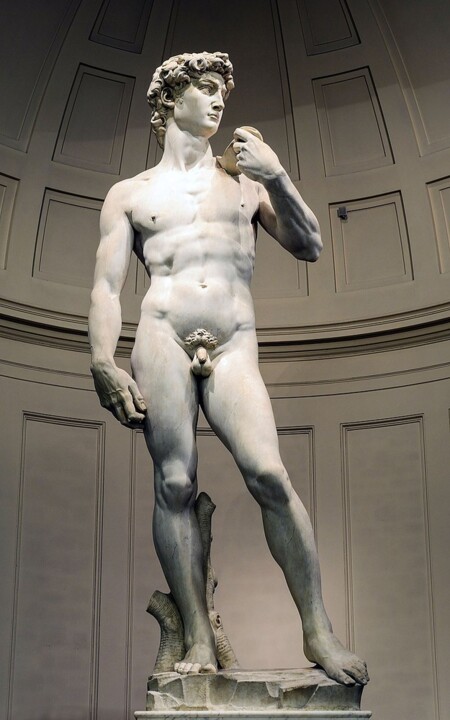 Fear of offending Emiratis, private parts of Michelangelo's David statue censored at Dubai Expo
Fear of offending Emiratis, private parts of Michelangelo's David statue censored at Dubai Expo
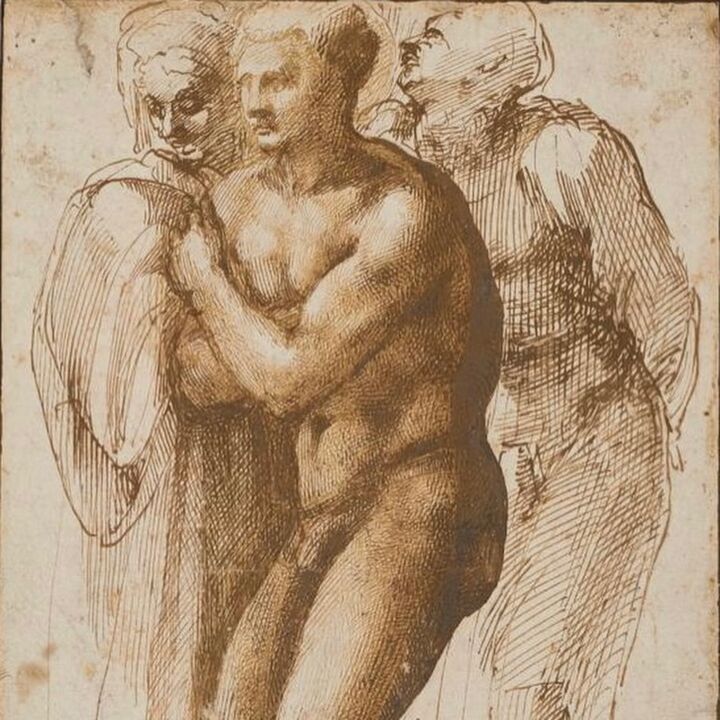 In a Paris auction, a rare Michelangelo drawing might reach $33 million
In a Paris auction, a rare Michelangelo drawing might reach $33 million
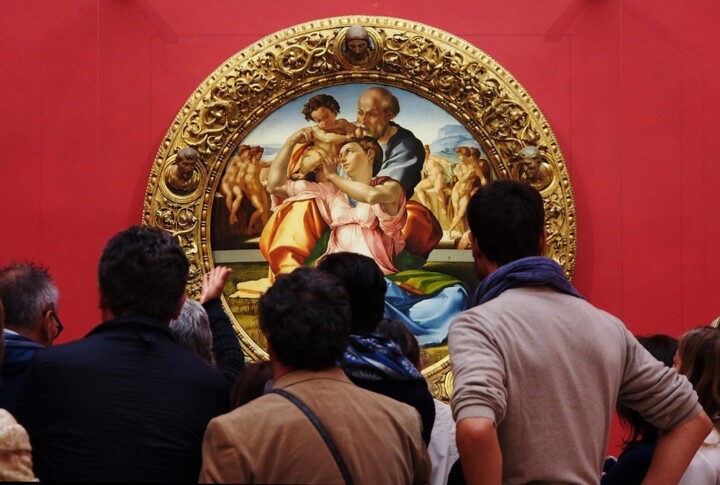 The Uffizi Gallery earns only €70,000 from a Michelangelo NFT that sold for €240,000
The Uffizi Gallery earns only €70,000 from a Michelangelo NFT that sold for €240,000
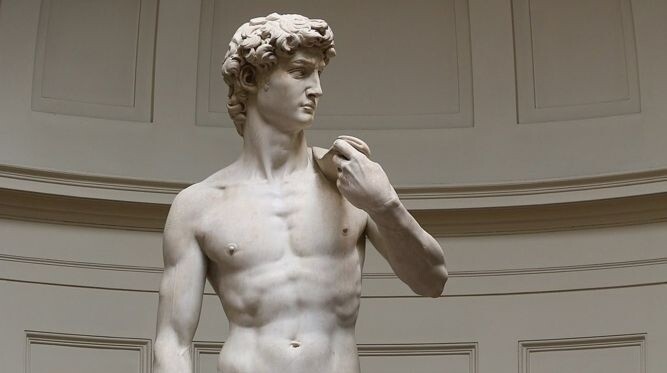 Michelangelo's David banned in Florida schools because deemed "pornographic"!
Michelangelo's David banned in Florida schools because deemed "pornographic"!
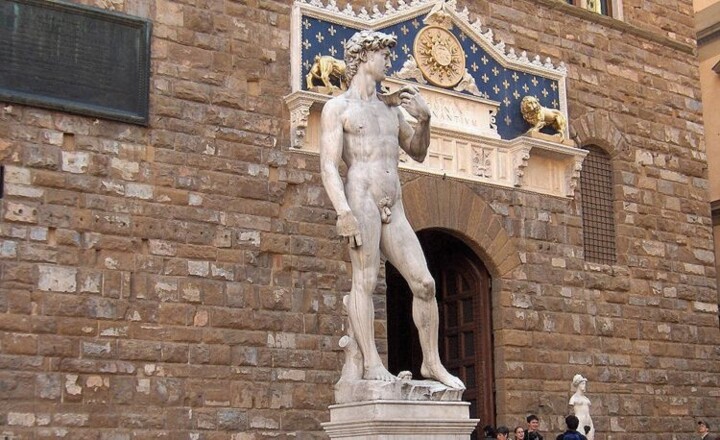 Florida Department of Education Says Michelangelo's David Has 'Artistic Value'
Florida Department of Education Says Michelangelo's David Has 'Artistic Value'
 It's Not Just Florida: Michelangelo's David Censored in Scotland
It's Not Just Florida: Michelangelo's David Censored in Scotland








